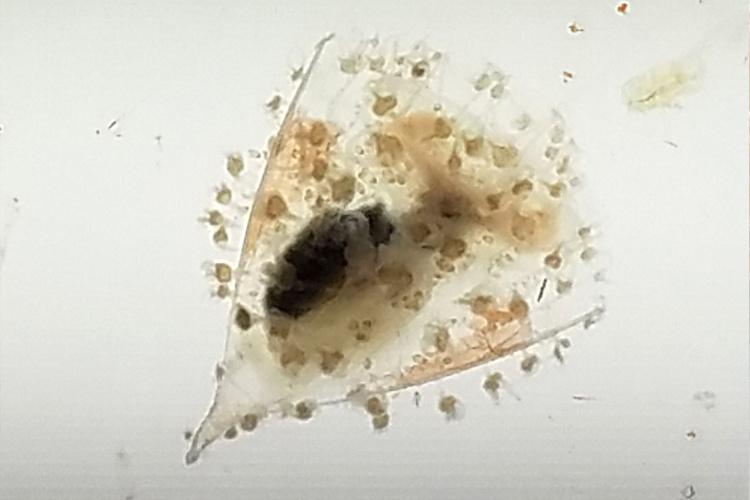Zooplankton- The Food of Larval Fish
We are now in the homestretch of our survey! Over 250 stations sampled and we are currently off the south eastern coast of Kodiak getting closer to the port. The past few days have been exciting! We collected more sablefish in our neuston net, and also saw Northern Fur Seals and orcas. Unfortunately, these animals moved too quickly to capture any decent pictures. The skies cleared over the past few days enabling us to witness some glorious sunsets and sunrises.

One of our researchers, Adam Spear, counting and identifying zooplankton for a rapid zooplankton analysis during the cruise.
Next Step: Analysis
As we near the end of the survey, we have collected over 300 samples. These samples will be offloaded from the vessel in Kodiak and sent to Seattle. It takes about a year to process and analyze all the samples collected. Given that we collect about 3,000 samples in total from all our surveys every year- this is a really fast turnaround time. Plankton samples are extremely labor intensive to process. For each sample, you must pick out all the larval fish and identify them. Approximately half of the samples also are processed for zooplankton, which means we count and identify each zooplankton species. Although our primary focus is on larval fish, we are also interested in zooplankton because they are prey for larval fish. The number and nutritious value of the various zooplankton species influences the overall health and survival of the larval fish eating them.

After rinsing plankton from the net, we preserve them in these jars that will be shipped back to Seattle after the survey is complete.

Unsorted plankton sample.
Initial Analysis
Rapid Zooplankton Analysis, or RZA, is a way for us to get a rough idea of the zooplankton species and their abundances at each station soon after leaving the ship. Until we have our final data, the RZA serves as an early indicator about the zooplankton community in the study area. It tells us if a given station has a favorable or unfavorable prey field for larval fish, when combined with feeding preference information. The ability of larval fish to find and feed on nutritious prey is crucial for their growth and survival. Larval fish in regions with high numbers of nutritious zooplankton often have higher growth rates and more individuals will likely survive to adulthood.

Another type of zooplankton, this is the larval form of a squid.
We provide these data to managers at the North Pacific Fisheries Management Council and the fishing industry. Knowing where the best environments are that enhance larval fish survival is essential to effective management of commercial fish species.

Sunrise as we approach our next sampling station offshore of Kodiak Island.
Meet the Blogger

Ali Deary
Ali Deary is an East Coast transplant to the Pacific Northwest. While she has been to Alaska as an intern in previous surveys, this research mission is her first as a NOAA employee. Ali graduated with a bachelor’s degree in marine biology from the College of Charleston and obtained her doctorate in marine science from the College of William and Mary.
For her dissertation, she looked at how bone development influenced foraging in early stage fish in the Chesapeake Bay. She joined the Ecosystems and Fisheries Oceanography Coordinated Investigations team in January. In her free time, Ali enjoys exploring the Seattle area with her corgi.



